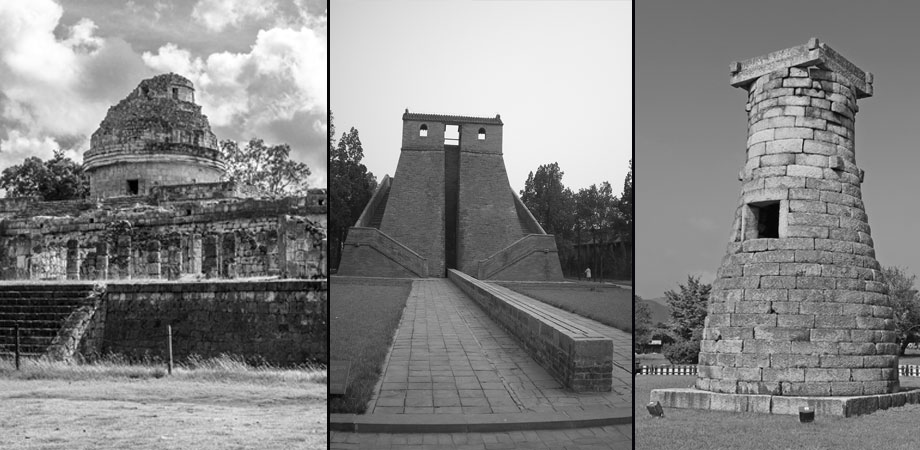
At the Chichen Itza archaeological site in Mexico stands the remains of a domed tower. Inside of that tower is a spiraling staircase that ascends to the top-the path to an observation deck that would have been climbed by Mayan astronomers over 1,000 years ago. El Caracol, which means "snail" in Spanish in reference to that staircase, is just one of many ancient structures across the globe erected to aid observation of planets and stars in the night sky.
The science of ancient astronomy can be difficult to extricate from myth. The constellations and movements of planets became part of the lore of ancient peoples, where the stars were often tools of divination, and their movement was presumed to have an impact on the fates of people on Earth. Cosmology was relied upon to create stories that answer core human questions about where we come from and who else is out there.
In addition to informing the philosophy and origin stories of many ancient civilizations, naked-eye astronomers were able to achieve some significant and fairly accurate calculations, including the size of the Earth, the modern calendar, and planetary models of our solar system.
In the past millennium, our tools for studying space from the ground have evolved from naked-eye observations, to primitive telescopes in the 17th century, to the advent of modern telescopes in the 20th century. As telescope lenses got larger, and as instruments were developed to make observations in wavelengths longer than the visible range, our understanding of the Universe grew deeper and weirder (hello, dark matter).
For the centuries before Sputnik, everything we could learn about the Universe we learned from the ground. And while space-based telescopes have given us new tools to observe and learn, ground-based systems continue to play an important role and continuously lead to new discoveries.
This issue of Photonics Focus explores the tools and systems that modern astronomers use to study space from the ground. Two articles explain different methods to create ever-larger telescope mirrors: spin-casting monoliths, and segmentation with adaptive optics. Another article reveals the enormous challenge of building highly precise instruments in some of the most seismically unstable locations on Earth; and yet another tells the story of the unfathomable amounts of data that will be generated by modern instruments, and how scientists plan to manage it.
The information that ground-based astronomers have been able to gather while anchored to terra firma is nothing short of a scientific wonder. And yet, while the technology has increased in both precision and power, many of the questions driving today's scientists sound similar to the ones asked by the astronomer-philosophers of millennia past: How did we get here? And, are we alone?
Thanks for reading,
Gwen Weerts, Managing Editor, Photonics Focus
